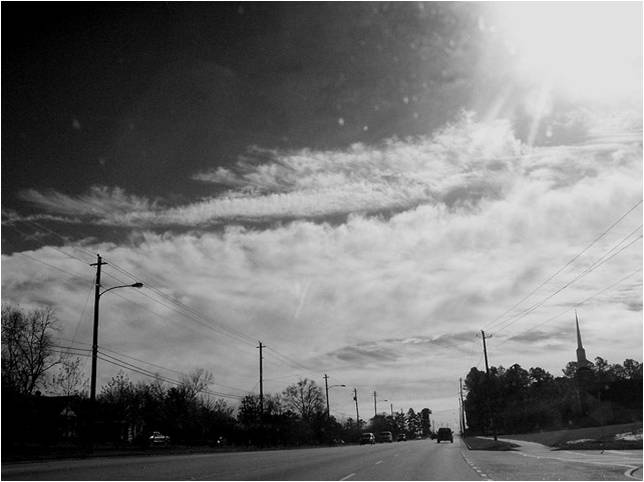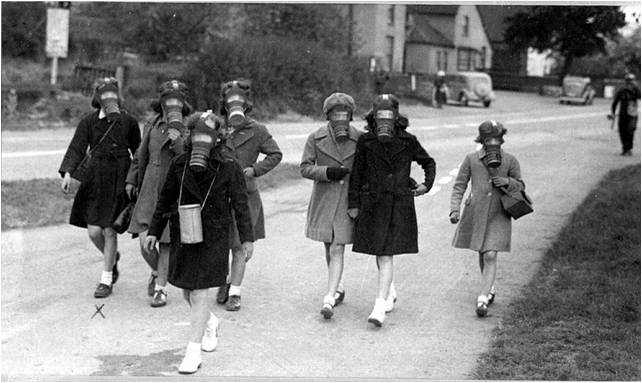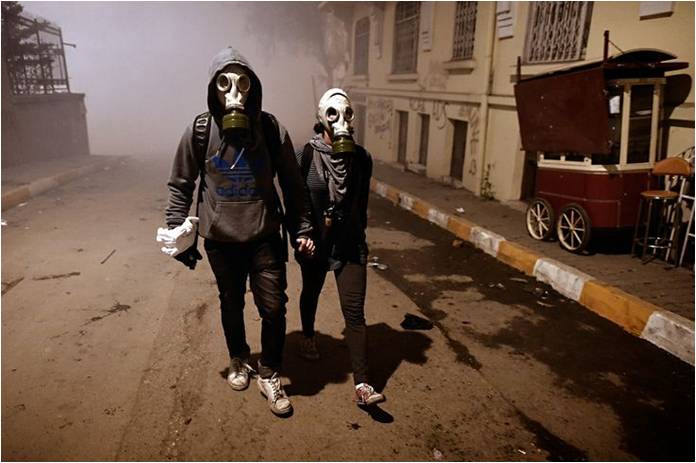[Editor’s foreword: This is a guest post written by John Anderson. Ultimately, I allowed this post here to highlight the role that the media and television shows like Doomsday Preppers are having on our image. Remember that no matter how “normal” you think you are… everyone else thinks you’re a bit crazy. Yes, even your mother. ;)]
They have been called many names: alarmists, over the top doomsters, mad, crazy. They call themselves the “preppers.” They are regular people with regular lives, who, just like all of us, would do anything to protect their homes and families—even protect them from the end of civilization, or the world as we know it.
In September 2012, a poll by the National Geographic indicated that 28% of Americans knew at least one prepper. [Editors note: seems like they failed OPSEC 101! I know it’s tough to keep quiet, especially to family and close friends. Just realize that you should expect anyone you talk to about prepping to show at your doorstep at TEOTWAWKI+1.] Around the same time, NatGeo ran one of its most-watched series, Doomsday Preppers. Discovery Channel came out with Doomsday Bunkers a year later. These programs explored the lives of otherwise ordinary Americans who will go to whatever lengths to prepare for uncertainties. They are unique in their beliefs, motivations and strategies. They are also known to test the limits of ingenuity by developing survival machines, high-tech shelters, planning escape routes, and other Armageddon defense systems. They are all about survival.

A 2012 article by the Daily Mail estimated the number of preppers at three million in the U.S. alone. You could be living next to a prepper and may not know it. The survival blog is among the many several websites dedicated to prepper communities and around 300,000 people visit it every month. Hit TV shows, several dedicated websites, best-selling books, doomsday businesses on the rise, and an ever-growing group of what they call the new breed of “survivalists” are proof that prepping for the worst is more than just a phenomenon—it is here, it is now, and they are everywhere.
Who Are The Preppers?
A self-confessed prepper wrote an article for the New York Times called, “The Preppers Next Door.” Alan Feuer lamented that it is not easy being a prepper these days. For all he knows, he says, the record-rater NatGeo series is nothing but a weekly invitation to laugh at “lunatics” like them. To the question who are the preppers, he wrote: “To the unprepared, the very word ‘prepper’ is likely to summon images of armed zealots hunkered down in bunkers awaiting the End of Days; but the reality, local Preppers are doctors, doormen, charter school executives, subway conductors, advertising writers and happily married couples from the Bronx. They are no doubt people that you know.”

Prepping or getting ready for the end of the world is not a new concept. It is also not strictly American either. Doomsday prophets have been around for as long as civilization.
During the cold war, the US government was the biggest prepper constructing a massive underground bunker to protect members of the Congress. It had 75,000 gallons of water, a power system, and a stockpile of medical and food supplies. It even had a mural of the Washington scenery capable of changing leaves depending on the season. The Washington Post blew the cover of this “ultimate congressional hideaway” in a 1992 exclusive and the bunker was abandoned since.
Nuclear warfare, arms race, asteroid strikes, and religious beliefs are some of the reasons for the birth of the prepping communities such as the ones we know now. More recently, the threat of disasters, catastrophes, climate change, terror attacks, epidemics, economic meltdown, energy and water shortages have added to the list of what to be prepared for. The movie, “The Road” released in 2011 is also believed to have added momentum to the movement.
How Prepared Are We?
A study by Kelton Research for National Geographic showed that nine out of ten Americans expect a world disaster to happen in the next quarter century (or in their lifetime) but 56% admit that they are not prepared. [Editor’s note: I would be shocked if the other 44% were even remotely prepared for a worldwide disaster let along anything else. Most people are woefully underprepared, even those of us who think we are.] If an important component of civilization like the electrical grid went down, 24% think violence would break out within the first week. The WND survey also found that when such an emergency leads to unrest, 58% of Americans are willing to kill anyone who will attack their family.
The world is increasingly becoming unstable—prepper or not, you are most likely to believe that. Events such as hurricanes and earthquakes made us feel more vulnerable than ever. Red Cross has reported an increase in the number of people learning first aid. However, majority of American families seem to be taking things a little too lightly. A study published by CNN revealed that six out of 10 families do not have a family emergency plan. In fact, only 19% felt they were “very prepared” for a disaster. Researchers from the Adelphi university Center for Health Innovation also found that 53% of Americans do not have a three-day survival food kits, 44% do not have first-aid kits, and another 48% lack emergency supplies.
OK or OA?

This is in stark contrast to preppers whose preparedness guide is admittedly of a different magnitude. If a regular American does not even have a 72-hour survival food kit, preppers have a stockpile of food. [Editor’s note: This isn’t necessarily true. That “stockpile” can diminish quickly due to a variety of reasons.] NatGeo’s Doomsday Preppers showed how preppers store a year’s supply of food in a location safe from theft and remain useable for as long as possible. These supplies should provide at least 2,200 calories a day. Preppers also work to be nutritionally self-sufficient through preservation and growing crops and animals given the challenges of the climate zone. A Daily Mail article told the story of a man in Phoenix who keeps 1,000 tilapia fishes in the deep end of his swimming pool in case a massive solar flare happens. There’s a also a couple with enough food to last half a century.
On building a “fortress,” location is the most important for preppers. Among the common locations are: valley, woods, near a water source or a cropland. Some preppers spend millions to build bunkers with walls that can stand a nuclear attack.
Part of prepping is training to defend your community. Preppers are also well-equipped with firearms and ammunition. In the event that defense fails, an escape strategy is next. Preppers have backups for backups.
Prepper vs. Survivalist
Are preppers the new survivalists? Survivalist is an older term coined in the 70’s in the middle of the cold war. They redefined their lives, changed their lifestyles, moved to remote locations, stocked food, and trained in necessary skills to survive.
A prepper is a newer term and almost a result of pop culture. A Newsweek article called them “survivalist-light.” This is because a survivalist is viewed to be more extreme in preparation and redefining their lives in general. [Editor’s note: I don’t care what you call me because I know what I’m doing is the right thing for my family, but labels can be damaging when taken in the wrong context. It does seem to me that the terms “prepper” or “survivalist” are taking on a more negative tone of late… be wary of the media’s use of these words to describe you.]
To some extent though, the terms can be used to mean the same thing—people trying their best to survive. Preppers themselves say that no two preppers could have just one motivation. However, the objective is the same—surviving through whatever means possible. To them, survivalists and preppers are just labels. All of us are preppers in one way or another—preparing for our family’s future, typhoons, etc. The difference lies in magnitude. As far as preppers are concerned, when it comes to their homes and families, you can never prepare enough. Like the old saying goes, “It’s better to be safe than sorry”.
Author Bio
John Anderson is a Web Developer, Creative Content Director and a Commissioned Artist. He is particular in watching web and social media changes and uses. He is interested about various internet trends and enjoys his day job as a cartoonist and commissioned artist. Follow him on Twitter.

Leave a Reply